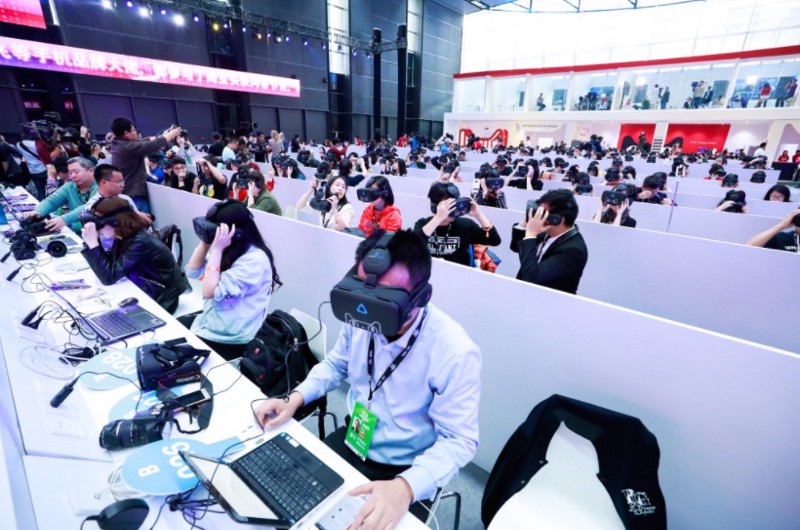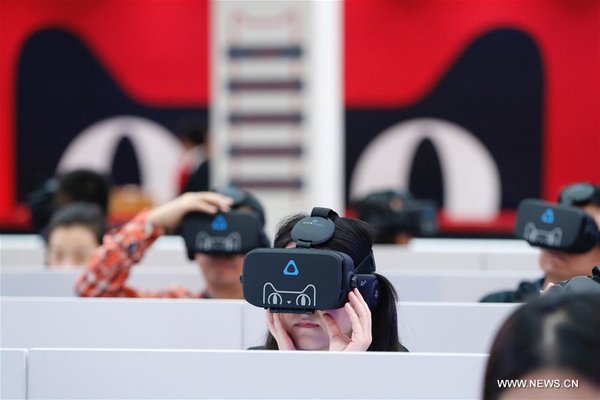VR experts Spinview follow the mantra 'don't do VR for VR's sake' and focus on providing great business results for retailers looking to transform the consumer experience. Their in-situ environments and cutting-edge eye-tracking research gives deep analysis in a cost-effective way that has already won awards.
“‘Our VR and AR technology uses visual insights to enable brands to understand how their customers make decisions and how to influence them. We drive results that are both more accurate and cost-effective than real-world research - and we are really only at the start of the journey.’”
Co-Authors: Kris Kolo, Nathan Pettyjohn, Jordan Bloomingdale, Barry Hoffman, Danny Gordon, John Wright
Participate in our Retail Committee
Retail is making shopping and buying easier and more fun again. For some shoppers and products alike, the full product view is really needed. Below are examples of what our Members are up to.
For the in-store experience, retailers can now leverage InContext Solutions VR simulations that let executives test store campaigns and displays with analysis and feedback from the program. This could be a game changer for high volume stores, potentially making every customer a conversion. In one example, the results showed improved KPIs: 7% increase in category sales 14% increase in private label sales; 5% increase in units per buyer; Customer ROI: $920K in incremental sales and $275K in category margin for the retailer.
In another InContext example, by referencing the sales and shopper impact data collected from Indicators, the executive team made a speedy decision about which signage strategy would meet their goals. The results showed Units per buyer and sales for key center of store categories increased within the first 12 weeks following the signage campaign implementation. Over time, the client attributed a Y1 topline increase of $1m to this campaign.
On the product side, Aisle411 3D product cloud enables 3D scanning of consumer products tailored with brand information for the full turnkey needs of a product. The 3D Product Cloud system reduces the time of creating 3D models by an average of 65-70%. Brands can easily give access to their 3D product models to app developer partners, marketing agency partners, and retail partners; for use in VR/AR commerce apps and websites. 90% of users prefer augmented reality navigation and experiences over 2D mobile app experiences.
In another example of aislle level AR, Blue Visual Effects, have been working with the Good Neighbor Pharmacy Franchise to create a fully integrated augmented store package. This includes building deeper messages via AR in all in-store signage, having AR pharmacy hosts that direct consumers to specific departments within the store, co-branded Augmented products with shelf talker callouts and instant coupon delivery based on AR actuation.
On the lighter side, Strata’s Nu Skin’s Lumi Spa app lets users use a facial massager via AR to see how the product would work. The goal of being to engage customers and provide some entertainment for social sharing.
For Audi, ZeroLight undertakes a range of projects using cutting edge display devices and techniques; it’s virtual reality experience allows users to walk around to explore the car, utilising the large "play area" of the HTC Vive. The user digitally interacts with a fully configurable 5 million polygon car with advanced lighting and effects at 90Hz with sub 20ms latency. Such high performance from the hardware is made possible by ZeroLight's highly optimised visualization solution and means a sickness-free experience for the customer.
With UrCommerce AR solution, users can view products in 3D from their mobile device. For example, they are working with the company ColorMods LLC ; using Augmented Reality to revamp their advertising initiatives, both in print and on their website. They are building out 3D models of the computers that they sell so that customers can visualize them on their phones or tablets. The company also creates posters that enable AR to showcase a product; and even allows users who like the product to purchase via in app link.
Rounding out the promising marriage between retail and AR is Auredi, an augmented reality dining platform, which combines both an in-restaurant and social experience for restaurants and patrons to utilize 3D models of dishes on mobile devices. The company has already signed up several Los Angeles restaurants in a private beta, with customers currently exploring and enjoying all the innovative features the platform offers.
See more use case and case studies here
Participate in our Retail Committee











